|
Cantata BWV 67
Halt im Gedächtnis Jesum Christ
Examples from the Score |
|
Mvt. 1: Chorus | Mvt. 2: Aria [Tenor] | Mvt. 6: Aria [S, A, T, B] | Mvt. 7: Chorale |
| |
|
Mvt. 1: Chorus |
|
In the 1st example from Mvt. 1 Bach immediately establishes the conflict between Christ's resurrection and the turmoil in the hearts of the Christian believers at the very beginning of the cantata. |
|
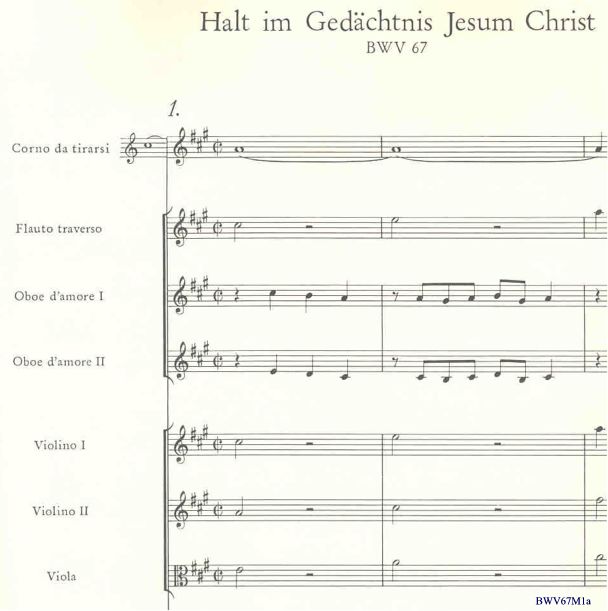
|
|
As Schweitzer indicated, Bach's "fondness for sharp contrasts makes him particularly delight in texts of this kind. Even when the antithesis suggested in the poem is purely incidental, he will fasten upon it and make it the fundamental idea of his music." And also, "almost invariably the motif that appears in the first bar is maintained to the last, as if the composer were indifferent to the details of the text." And elsewhere, "Bach is a dramatist, but just in the sense that the painter is. He does not paint successive events, but seizes upon the pregnant moment that contains the whole event for him, and depicts this in music." The long held note in the corno da tirarsi at the top represents 'holding on to the firm belief of the resurrection' and the shorter note values in the strings and the flute represent the fear, the faster breathing that a fearful person would exhibit. Example 2 |
|
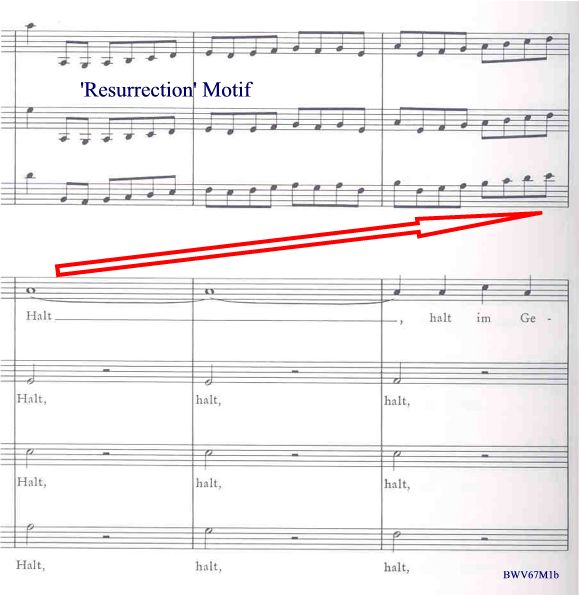
|
|
now has the same idea transferred to the vocal parts and above that in the strings you can see the first example of many in this cantata showing the upward movement, here representing the resurrection of Christ. Example 3 |
|
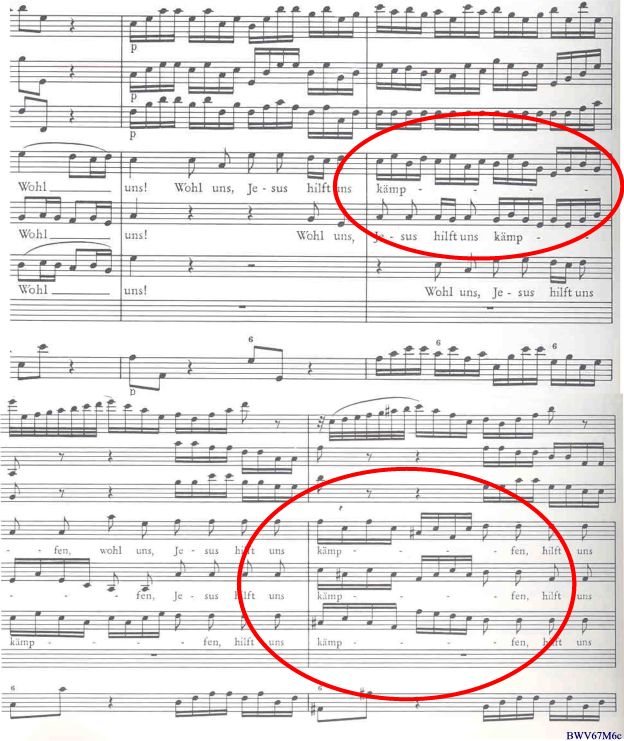
|
|
illustrates both the 'holding on to one's belief in the resurrection' and the upward rising fugal theme the resurrection motif itself now in the vocal parts. There are many extra sharps and some rare double sharps to be seen in Example 4 |
|
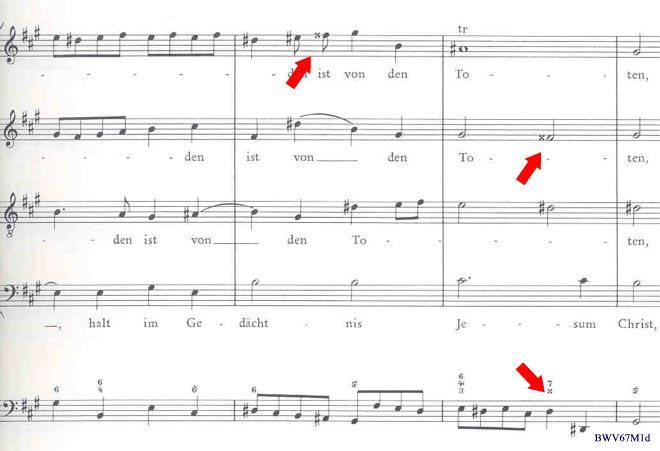
|
|
where the words specifically refer to the realm of the dead. The next two examples (5 & 6) show a definite downward movement of instrumental and vocal parts. |
|

|
|
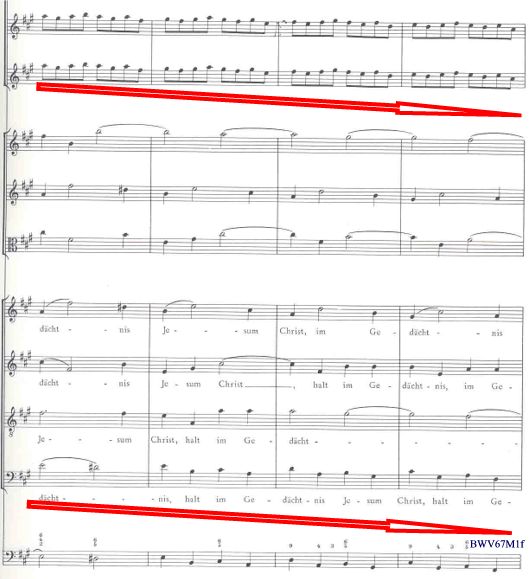
|
|
Is this already a foreshadowing of Christ's coming down to speak the Easter greeting at the end of the cantata? |
| |
|
Mvt. 2: Aria [Tenor] |
|
Mvt. 2 has one example (7) |
|
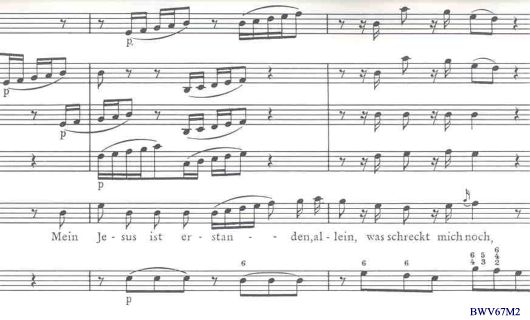
|
|
from the score showing side by side the sweeping upward moving motifs representing the resurrection and right behind that the fear motif consisting of very short figures and rests. |
| |
|
Mvt. 6: Aria [S, A, T, B] |
|
Mvt. 6 has many abrupt changes indicating the conflict between the turmoil, vacillation, doubt vs. the firm belief in the resurrection of Christ. Example 8 |
|
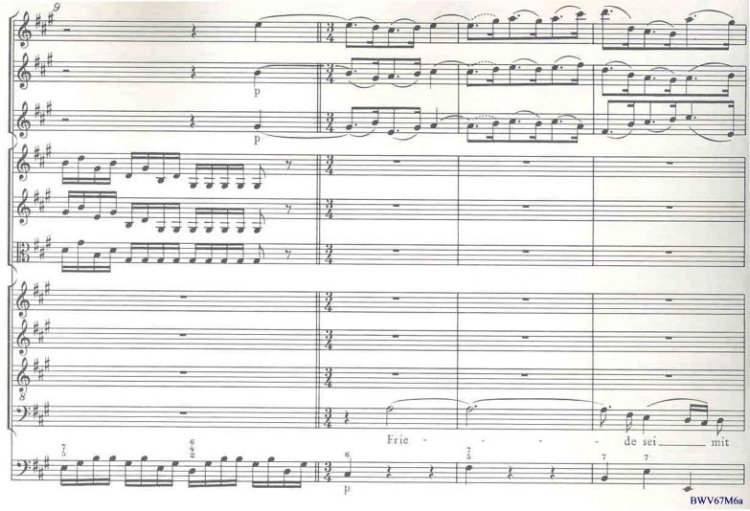
|
|
illustrates one of numerous transition points between the strings (turmoil, etc.) and the woodwinds introducing the 'transfiguration' motif that Schweitzer mentioned. The woodwinds have the 'solemnity', 'felicity', or 'tranquil' rhythm (according to Schweitzer) amply demonstrated at the top of this example 9. |
|
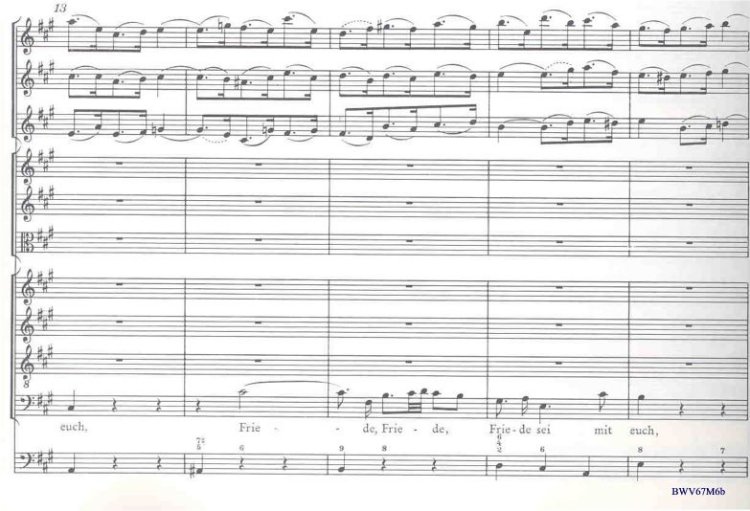
|
|
Example 10 |
|

|
|
shows two places in the score where the singing becomes quite difficult, whether performed only OVPP or with 'yelping' falsettists. The words, "in dein Ehrenreich" in example 11 |
|
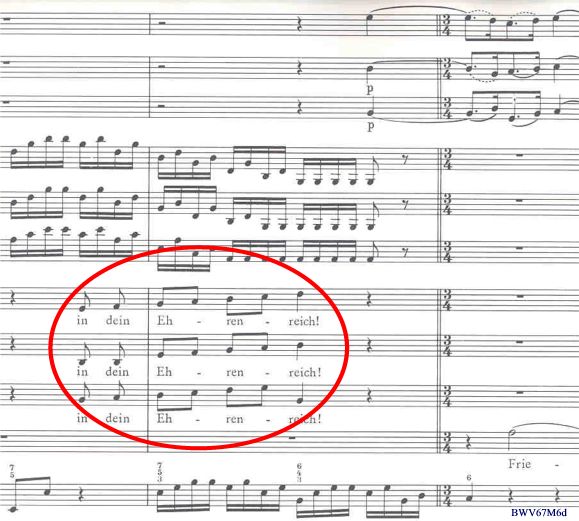
|
|
are performed correctly with understanding by Richter. Schweitzer had indicated the many pitfalls of such a transition like this. The strings and bass with the uplifting words sung by the choir must continue at a loud volume and not subside prematurely or engage in any kind of slowing down in order to prepare for the piano entrance by the woodwinds. In the final section of the mvt, example 12 |
|
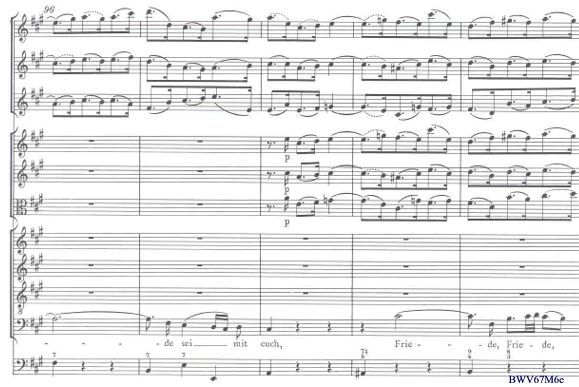
|
|
the last time the vox Christi appears, the strings, that have only been used to accentuate the turmoil, now join the woodwinds in their 'transfiguration' motif. The conflict subsides. At the very end of the mvt. example 13 |
|
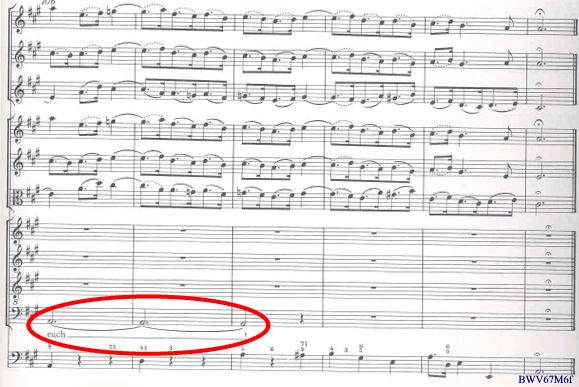
|
|
the bass ends on a low note. If the voice is unable to project or if the conductor does not hold back the combined forces of strings and woodwinds + bc., the result can become rather unsatisfactory. |
| |
|
Mvt. 7: Chorale |
|
Mvt. 7 has an interesting incipit up to the first fermata in the soprano (melody) line. Remember BWV 97 "In allen meinen Taten" and the Heinrich Isaak melody? Example 14 |
|
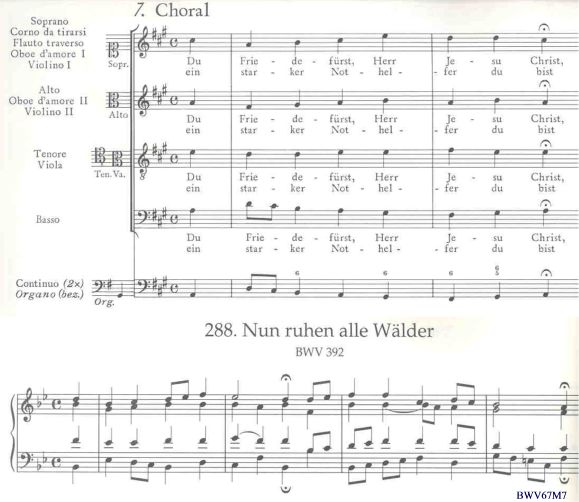
|
| |
|
All snippets from NBA I/11.1
Contributed by Thomas Braatz (April 26, 2001) |